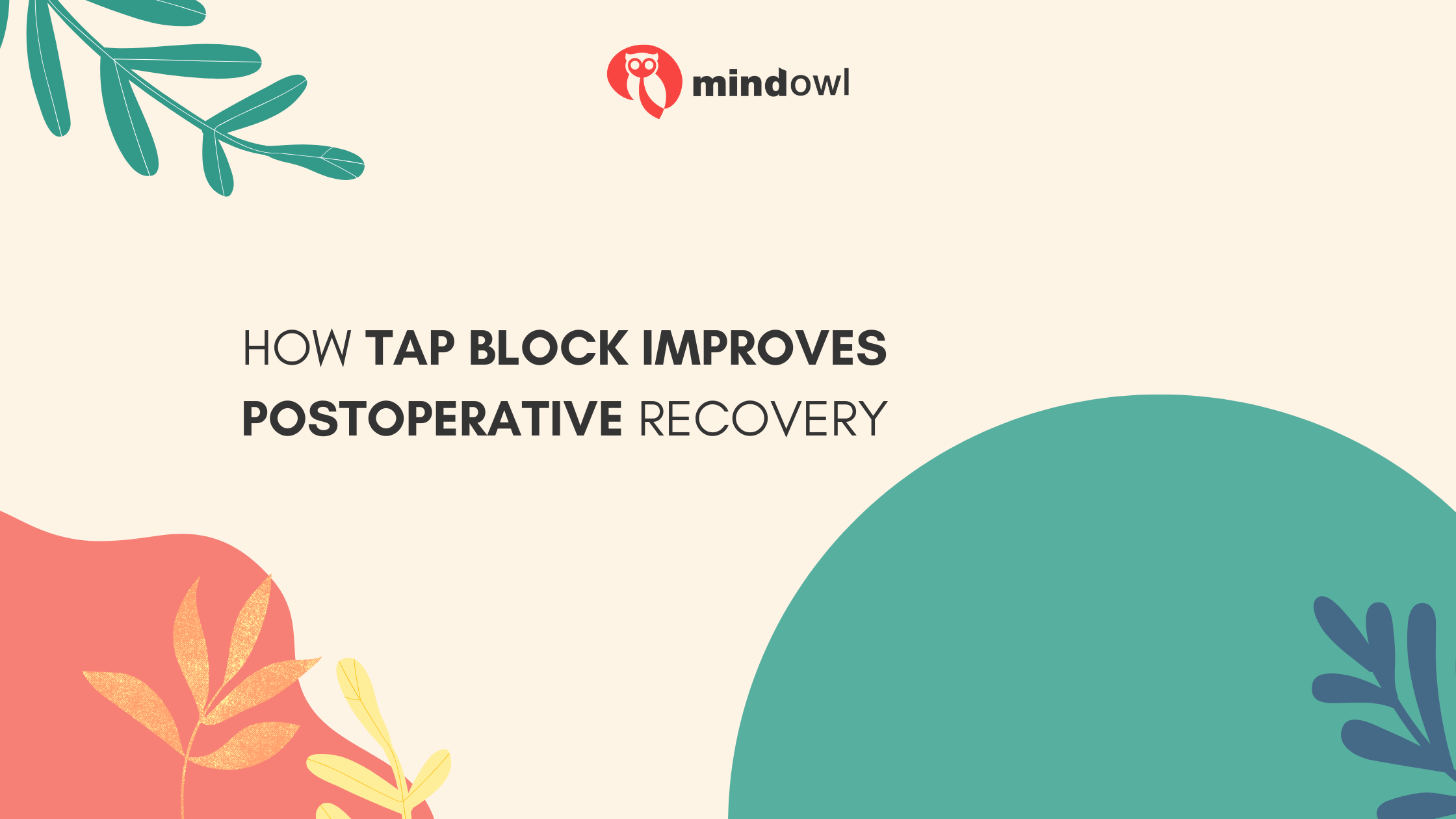TAP (Transversus Abdominis Plane) block is increasingly recognized as a valuable tool in enhancing postoperative recovery following gynecological and obstetric surgeries. This technique, which involves the delivery of local anesthetic into the fascial plane between the internal oblique and transversus abdominis muscles, contributes to pain management while reducing the need for opioid analgesics.
Control of postoperative pain is of paramount importance as it can influence patient recovery times, satisfaction levels, and overall outcomes. With an increasing focus on rapid recovery protocols, understanding the advantages of TAP blocks helps medical professionals optimize patient care. Delve deeper into how TAP blocks enhance recovery for those undergoing these procedures.

What is TAP Block?
The Transversus Abdominis Plane block is a regional anesthesia technique that effectively numbs the lower abdominal area. Administered pre-operatively or intra-operatively, the procedure offers targeted pain relief through a minimally invasive approach. Since its introduction, TAP blocks have gained traction in the field of anesthesia, especially within gynecology and obstetrics.
The use of ultrasound guidance has further improved the accuracy and efficacy of this technique, allowing practitioners to precisely locate the transversus abdominis plane. Studies show that TAP blocks can decrease immediate postoperative pain scores significantly. By delivering local anesthetics directly to the site of interest, patients benefit from reduced discomfort and enhanced recovery profiles.
The Role of TAP Block in Obstetric Procedures
Within the realm of obstetrics, TAP blocks offer similar advantages for managing postoperative pain associated with cesarean deliveries. Traditionally, opioids have been the go-to choice for pain relief; however, they often come with side effects such as sedation and constipation that can hinder recovery. Know that obgyn tap block provides an effective alternative, lessening the need for opioid analgesics in the postoperative period. These patients experience a greater sense of comfort, allowing for more effective post-operative care and bonding time with their newborns. The expedited recovery facilitated by this technique also allows mothers to engage sooner in caregiving activities, which is instrumental in psychological well-being. This positive impact on parental bonding highlights the broader implications of effective pain management during obstetric surgeries.
Benefits of TAP Block in Gynaecological Procedures
In gynecological surgeries, including hysterectomies and ovarian cystectomies, managing postoperative pain effectively facilitates quicker recoveries. Studies indicate that patients receiving TAP blocks report lower pain scores and use fewer opioid medications post-surgery. TAP blocks allow for earlier mobility, which prevents complications such as deep vein thrombosis and pulmonary embolism.
The multimodal analgesic approach, where TAP blocks complement other pain management methods, ensures a comprehensive strategy that targets different pain pathways. As patient outcomes improve, the overall satisfaction with surgical interventions increases. Most importantly, the adoption of TAP blocks aligns well with current institutional efforts to enhance the quality of surgical care.
Impact on Recovery Time
With effective pain relief in place, patients are much more inclined to begin rehabilitation exercises promptly. Engaging in light physical activity soon after surgery can dramatically influence recovery efficiency, reducing the risks of complications.
Patients who can move without significant pain report higher satisfaction scores and express greater readiness to engage with their healthcare teams. Rapid recovery can translate to earlier discharge from healthcare facilities, reducing the overall costs associated with longer hospital stays. The use of TAP blocks empowers patients by equipping them with the resources needed for a successful recovery.
Improving Pain Management Practices
The introduction of TAP blocks has transformed standard practices surrounding pain management in gynecological and obstetric surgeries. Historically, postoperative pain management relied heavily on systemic medications, often leading to inadequate pain control and increased side effects. By contrast, TAP blocks deliver localized anesthesia, offering significant relief without the systemic complications associated with opioids.
The ability to tailor pain management strategies according to individual patient needs leads to more effective treatments. Research emphasizes the importance of personalized medicine in achieving optimal outcomes, and TAP blocks easily fit into this approach. Similarly, specialized vascular care, such as that provided by Texas Vein Experts, plays a crucial role in improving patient recovery and overall vascular health, particularly in post-surgical settings.
The shift towards enhanced recovery after surgery (ERAS) protocols highlights the need for innovative solutions to meet patient needs efficiently, including TAP blocks as part of such protocols, which positions healthcare providers to deliver better care while emphasizing patient-centric strategies.
Future Directions for TAP Block Implementation
As the medical community continues to engage in research and development, the future of TAP blocks appears promising for further integration into surgical practices. Ongoing studies aim to refine techniques, explore alternative medications, and determine optimal dosages for varying patient profiles.
Research on long-term outcomes regarding chronic pain and patient satisfaction is intriguing for refining best practices. Telemedicine offers a platform for improving patient education around pain management techniques and recovery expectations. This added focus could further enhance TAP block outcomes and patient experiences. Enhancing professional training for practitioners in administering TAP blocks will also contribute to wider acceptance and institutional integration. Hospitals embrace innovative approaches to postoperative care, so evaluate new data continuously and ensure that the best decisions are made based on current evidence.
Monitoring Patient Outcomes
Last but not least, evaluating the success of TAP blocks in postoperative recovery is the assessment of patient outcomes following surgery. Collecting data on pain scores, medication efficacy, and recovery milestones enables practitioners to gauge the impact of this technique accurately. Patients’ feedback concerning their postoperative experiences, including comfort levels and mobility, can guide improvements in surgical protocols and pain management strategies.
Know that comprehensive follow-up programs can provide valuable insights into long-term benefits and patient satisfaction. Studies illustrate that incorporating patient-reported outcomes into surgical care leads to enhanced quality and quality assurance measures. Addressing potential drawbacks, such as block failure or complications, is pivotal as practitioners continue to leverage TAP blocks. Focusing on data-driven decision-making supports ongoing improvements in patient care and postoperative recovery processes.

Implementing TAP blocks in gynecological and obstetric surgeries significantly enhances postoperative recovery, offering patients improved pain management and quality of life. The advantages extend beyond merely reducing pain; they include shorter hospital stays, reduced opioid consumption, and enhanced mobility.
Continuous assessment of patient outcomes ensures that healthcare providers refine their practices, contributing to a more effective and compassionate surgical arena. It’s safe to say TAP blocks are leading the way toward better healing and patient satisfaction.
MindOwl Founder – My own struggles in life have led me to this path of understanding the human condition. I graduated with a bachelor’s degree in philosophy before completing a master’s degree in psychology at Regent’s University London. I then completed a postgraduate diploma in philosophical counselling before being trained in ACT (Acceptance and commitment therapy).
I’ve spent the last eight years studying the encounter of meditative practices with modern psychology.

